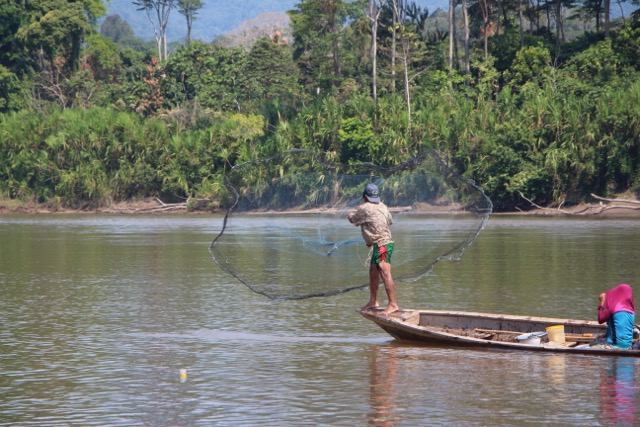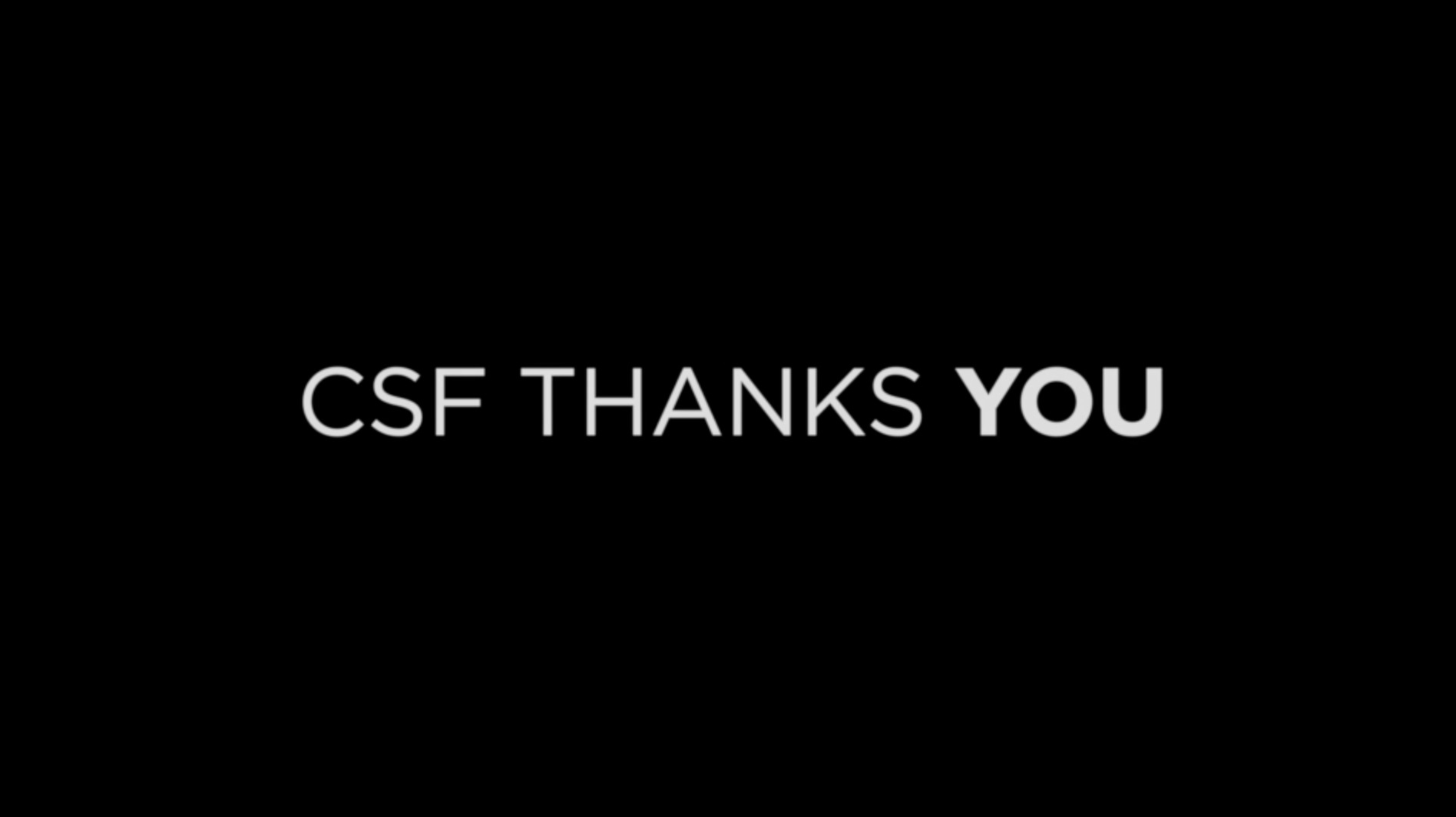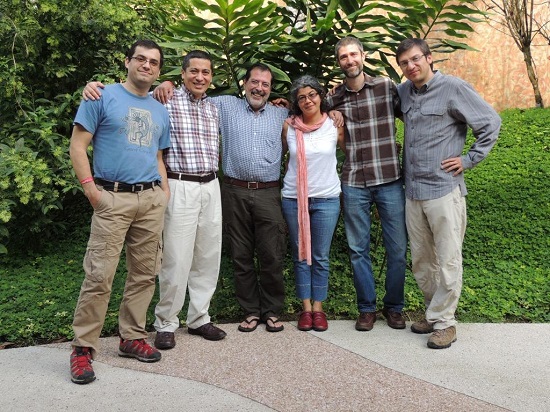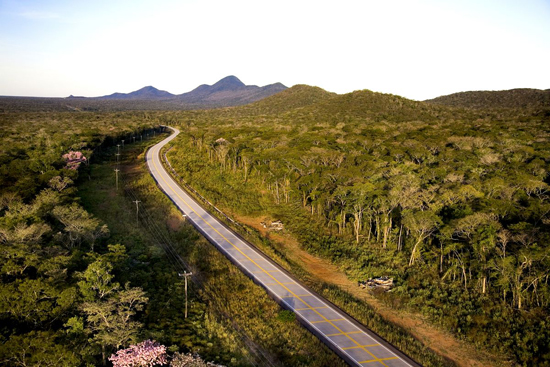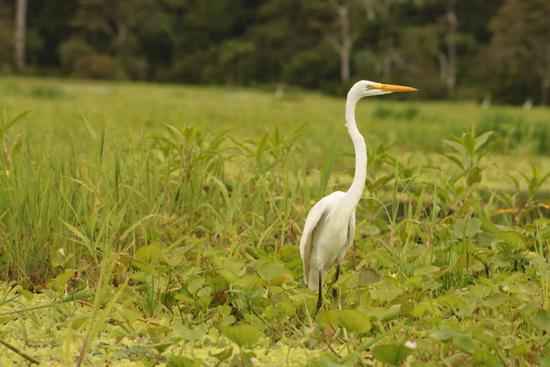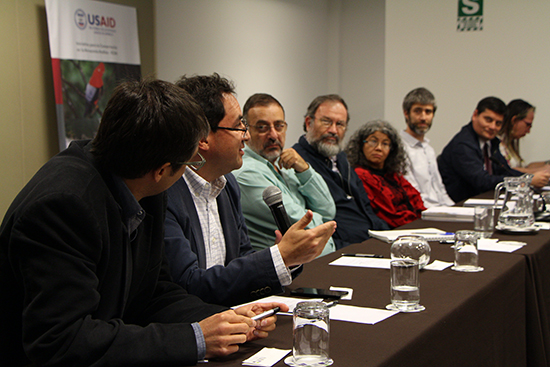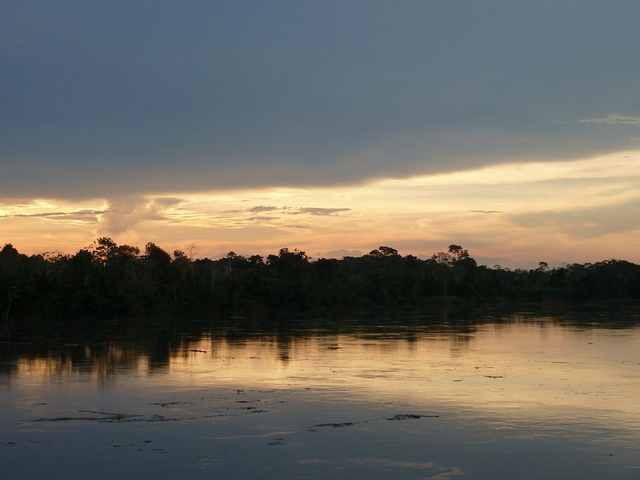News
Interviewers Milagros Estrada and Luis Bernal, Huancaya, Nor Yauyos-Cochas Landscape Reserve. Photo: Annie Escobedo.
Fisherman on the Marañon river. Photo credit: Jose Carlos Rubio
The Marañón River contributes about ten percent of the total water discharged by the Amazon river into the Atlantic Ocean, and transports approximately forty percent of all sediments carried in the Peruvian part of the Amazon watershed. Along with the Ucayali and Madre de Dios rivers, it is one of the main tributaries of the Amazon basin in Peru.
Every day, support from donors like you makes our work possible. Are you willing to make a special year-end donation to help us protect ecosystems around the world?Please, click here to make your donation now.
Vice Minister Fernando León (second from left) with Felipe Vásquez (CSF Fellows Mentor, left) and CSF staff members Cristian Vallejos, Rocío Moreno, Aaron Bruner and Alfonso Malky during the 2nd ICAA Fellows selection workshop in Arashá, Ecuador, July 2013.
Macaws in the Madre de Dios region. Photo credit: Anonymous.
Photo credit: Anita Escobedo.
Este 19 y 20 de agosto once becarios del Programa de Becas para el Desarrollo de Investigaciones Económicas Aplicadas para la Conservación en la Amazonía Andina presentaron, junto con sus tutores, los resultados de sus investigaciones a participantes de entidades de gobierno, ONG y universidades.
De cara al debate sobre las propuestas de interconexión entre las ciudades de Pucallpa (Perú) y Cruzeiro do Sul (Brasil), que atravesarían la Amazonía peruana, TNC y CSF realizaron en Lima el pasado 1ro de julio el Foro: “Retos para la interconexión sostenible de la región Ucayali”, en el marco del Consorcio Paisajes Indígenas de la Iniciativa para la Conservación en la Amazonía Andina de USAID.
Este video es realizado por CSF en el marco del Consorcio Paisajes Indígenas de la Iniciativa para la Conservación en la Amazonía Andina de USAID .
El video muestra las características y resultados del análisis hecho a las propuestas existentes para la interconexión vial entre las ciudades de Pucallpa (Perú) y Cruzeiro do Sul (Brasil) que atravesarían la Amazonía de ambos países.

